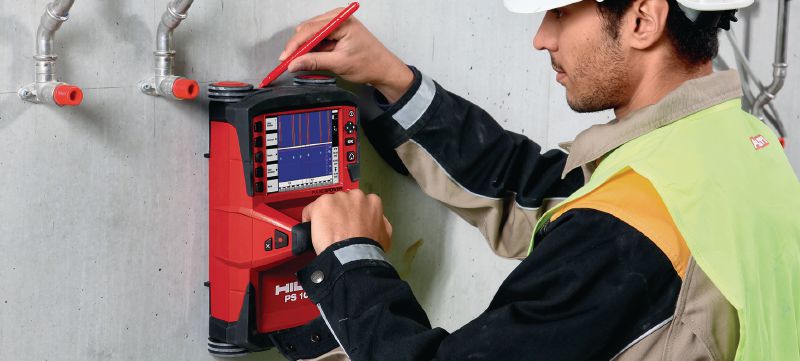Check Out RainierGPR Service Areas for Expert Concrete Scanning
Check Out RainierGPR Service Areas for Expert Concrete Scanning
Blog Article
Concrete Scanning: An Important Step Towards Making Sure Architectural Stability and Security
In the world of building and facilities maintenance, the importance of concrete scanning can not be overemphasized. By employing innovative technology and techniques, concrete scanning serves as a crucial tool in making certain that the integrity and safety and security of bridges and structures are upheld to the greatest standards.
Value of Concrete Scanning
Concrete scanning plays a crucial function in making certain the structural stability and safety and security of buildings and facilities tasks. By utilizing sophisticated modern technologies such as ground-penetrating radar (GPR) and electro-magnetic induction, professionals can non-destructively evaluate concrete frameworks to spot prospective defects, spaces, ingrained things, and reinforcement layout. This process makes it possible for very early detection of anomalies that could jeopardize the security of a framework, protecting against costly damages and guaranteeing the security of passengers.
Concrete scanning is specifically important during the planning and construction phases of a project. Before drilling, cutting, or coring right into concrete, scanning aids identify the precise locations of rebar, post-tension cable televisions, and other embedded aspects, reducing the danger of accidental hits that could lead to architectural weaknesses. Furthermore, concrete scanning aids in high quality control by confirming the thickness of concrete covers and discovering any type of inconsistencies that may affect the total longevity of the framework. Eventually, investing in concrete scanning solutions is not only a proactive measure to minimize dangers but also a basic step towards keeping the long-lasting safety and security of buildings and framework.
Technology for Concrete Inspection

Benefits of Early Discovery
Timely discovery of architectural issues can substantially minimize risks and guarantee the durability of building and construction projects. By identifying prospective issues beforehand in the construction process, stakeholders can take positive procedures to attend to problems prior to they intensify into larger and extra pricey troubles. Among the crucial benefits of early detection is the prevention of structural failings, which can pose serious safety hazards and result in project delays and financial losses.
Furthermore, early detection permits for prompt fixings and upkeep, which can aid expand the life-span of the framework. By attending to problems promptly, construction groups can prevent you could try here expensive repair work or perhaps the demand for early replacement of architectural parts. This positive approach not just saves money and time yet likewise enhances the total safety and security and longevity of the building and construction job.
Additionally, very early detection can boost job planning and decision-making by giving stakeholders with important insights right into the condition of the framework. Armed with this details, job supervisors can make educated choices pertaining to building approaches, materials, and timelines, bring about much more effective and efficient task end results.
Guaranteeing Architectural Stability
Making sure the architectural stability of a building task is critical to its security and long life. Structural stability describes the capacity of a structure or infrastructure to preserve its type and feature under ecological problems and various loads. To accomplish this, detailed assessment and tracking of the structure are necessary. Concrete scanning plays a critical role in making sure architectural security by detecting potential issues see this page such as voids, delamination, or reinforcement rust that might jeopardize the stability of the framework gradually.
By using advanced scanning innovations like ground-penetrating radar (GPR) and electro-magnetic induction, building professionals can non-invasively inspect concrete frameworks to determine areas of concern under the surface area. This proactive approach permits the early discovery of flaws or weaknesses, enabling timely repair work or support to avoid structural failings.
Routine concrete scanning throughout different construction stages and throughout the life cycle of a framework can help keep its click for more info stability, minimize risks, and make sure the safety of owners. By prioritizing architectural stability with concrete scanning, construction jobs can boost their durability and resilience, inevitably contributing to higher safety and security and durability.

Stopping Critical Failures
To safeguard against disastrous occasions, precise surveillance and proactive upkeep are imperative in preventing essential failures within structural frameworks. Discovering possible issues before they intensify is crucial to avoiding structural failures. Carrying out regular examinations, such as concrete scanning, can reveal covert problems like spaces, splits, or deterioration that can compromise the integrity of a structure. By using sophisticated scanning innovations like Ground Passing through Radar (GPR) or Concrete X-ray, designers can non-destructively analyze the problem of concrete and recognize weak factors that call for support or fixing - RainierGPR Service Areas.

Verdict
To conclude, concrete scanning plays an important function in ensuring structural honesty and security by utilizing innovative technology for very early detection of prospective problems. This aggressive technique helps avoid crucial failings and makes certain the stability of frameworks. It is essential to prioritize concrete examination as a standard technique to secure the durability and security of buildings and framework.
Concrete scanning plays a critical duty in making sure the architectural honesty and security of buildings and infrastructure jobs. In addition, concrete scanning aids in quality control by validating the thickness of concrete covers and finding any kind of discrepancies that might influence the overall toughness of the structure. Concrete scanning plays an important role in ensuring structural security by discovering potential issues such as gaps, delamination, or support rust that can compromise the integrity of the framework over time.

In final thought, concrete scanning plays a critical function in making certain structural honesty and safety and security by utilizing sophisticated modern technology for early detection of prospective concerns.
Report this page